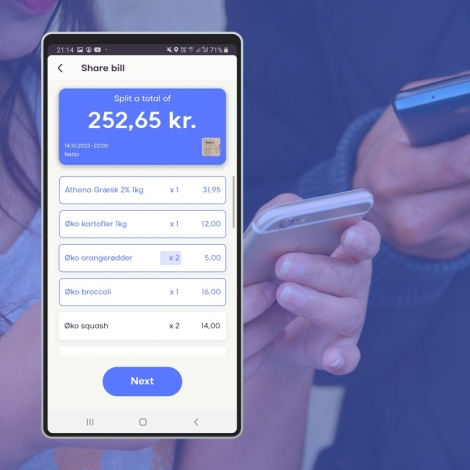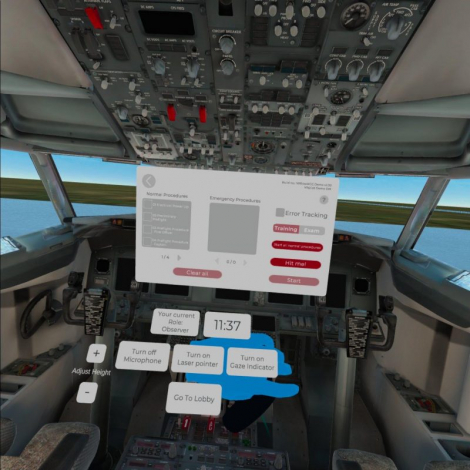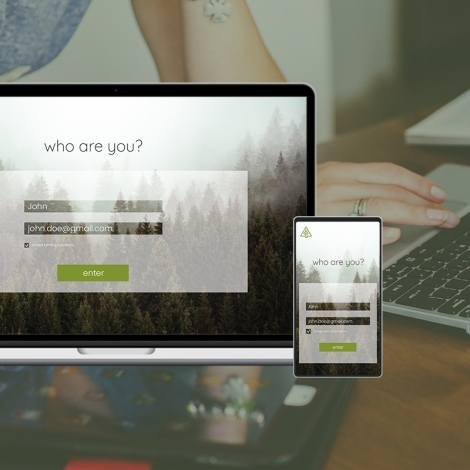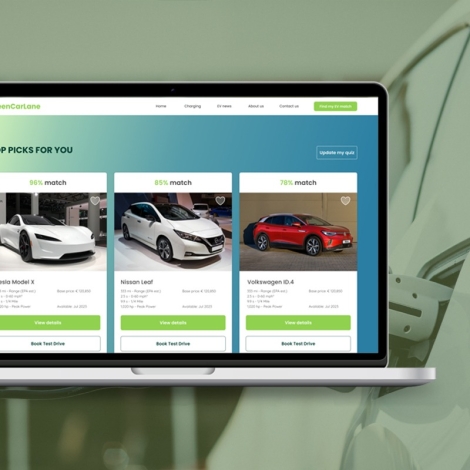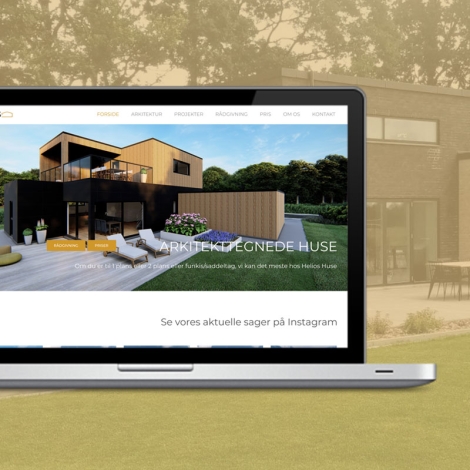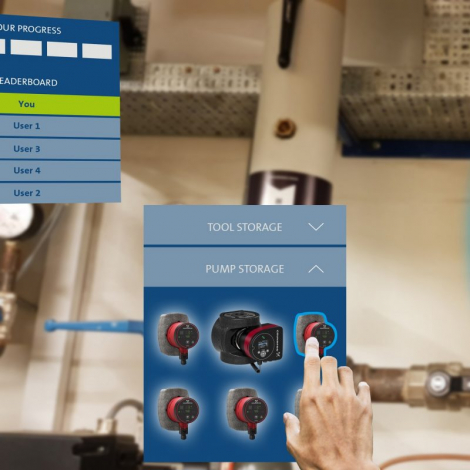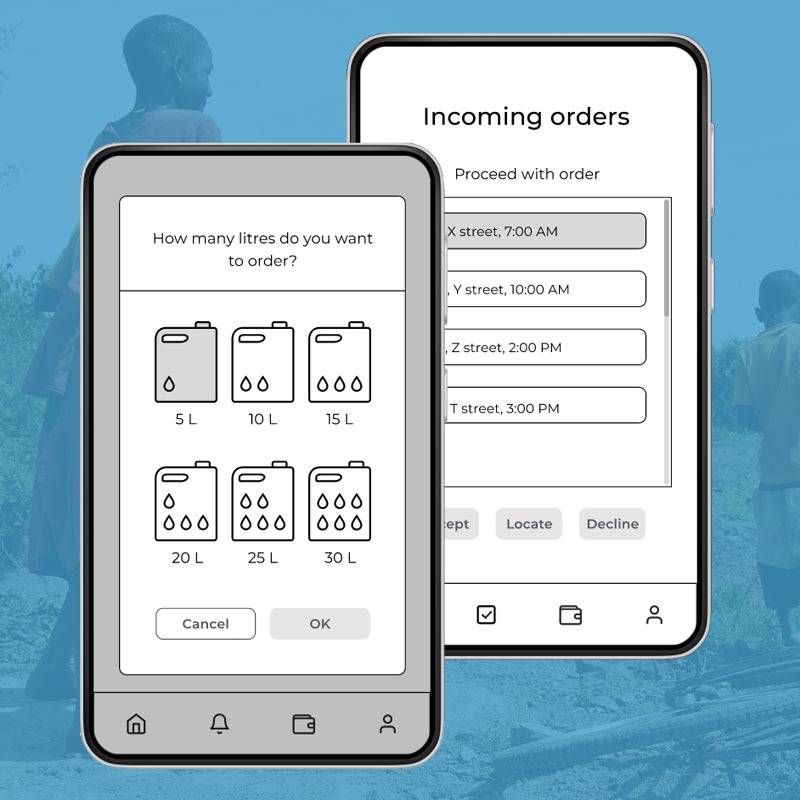
DoorDrop - offline mobile service
About the Project
DoorDrop – offline mobile service.
Created for a competition run by Grundfos.
Client
Created for a competition run by Grundfos
Duration
3 weeks
Design Challenge
Create a digital service that deals with lack of clean water in the everyday life of people in rural areas where Internet connection is either bad or non existent.
My Role
Concept development / UX design

Case Description

Value, Methods, Tools

Research and Empathize
Design Solution

What I Learned
Case Description
No Internet coverage
Women in the rural areas of developing countries are in charge of supplying their household with clean water. This every day task prevents them from going to school, having a job, etc. To deliver them from this burden, the task was to create a digital solution that allows them to purchase clean water to their doorstep. Development was constrained by the old smartphones people have there and the inconstant or none existent access to the Internet. In addition, most of the population does not own a bank account. Also, people living in the area would benefit by opening new job positions.
My Contribution
With this concept I participated in an design competition where participants helped Grundfos to solve the water crisis in rural areas around the world. “DoorDrop” proposes an offline mobile service. Customer and Employee app work together with third party integrations – mobile operator(s), SMS payment system and SMS based service – and thus make it possible to do data and money transactions.
The possibility of purchasing clean water for households will solve everyday struggle for many women and school age girls. Additionally, this system will create new job openings.
Hypothesis
“The possibility of purchasing clean water to their doorstep will solve everyday struggle for many women and school age girls, allowing them to spend more time on their development.
Additionally, this service will create new job openings.”
Value
Solves everyday struggle for many women
Overcomes the problematic Internet connection
Easy payment for users without a bank account
Opens new job positions
Methods
Design thinking
Research
Persona and User Journey
Wireframing
Tools
Hand sketching
Figma
Research and Empathize
What I needed to find out
I did more in depth research on the information given to me to be able to empathize better with users in rural areas. I looked into life conditions and access to services. My research on technology was focused on offline technologies that allows transfer of data.
Findings validated the initial information that I got from the case description. In addition, I found out that rural areas have many mobile operators running. I used that information to make two Personas that later helped create user journeys.
Meet Amara and Hakim
I created two Personas – Amara (customer) and Hakim (water delivery employee) to ensure the viability of the final product and the business impact through working with user frustrations.
After creating personas, I worked with user journeys to map how Amara and Hakim would reach their goals. The key interactions in the user journeys are:
Customer App
- Create user account
- Order clean water to Amara’s home
- Choose amount of water needed
- Choose date and time of delivery
- Track her history of purchases and amount spent
- Get notified when purchase reaches the address
Employee App
- Create user account
- Accept / deny orders
- Track his history of accepted orders and amount earned
- Use GPS navigation for delivery
I used these key interactions to outline key features in wireframes. You can seem in Design Solution section further down.
Data Transfer
After my research on technology, I chose SMS based service to design “DoorDrop” for. Main value of this system is that it does not rely on Internet connection. It operates through mobile service network that is well developed in rural areas (info from my research).
In “DoorDrop” ecosystem two mobile apps communicate through the SMS based service. Requests are sent from the app UI to the server, using network of mobile operators and received again in the UI of the other app. This way customer and employee are able to exchange information about the order, as well as to pay and receive payments through SMS payment system.
I created this illustration to show how is transfer of data happening.
Design Solution
Prototype and Test
After creating Personas, User journeys, Key features and choosing suitable technology, I hand-sketched wireframes for both apps. I tested them on a small scale to see if User journey is smooth and easy. Users had no problem navigating fast through the apps. Key functionalities were confirmed.
Next step was creation of wireframes in Figma. Requirements of the task allowed me to deliver the project at a wireframe level to show the concept.
Customer App
Key functionalities and features in customer’s app are:
- Purchasing water
- Specifying liters
- Specifying date and time for delivery
- Payment
- History of orders for the month and for the whole year
- Notifications
- User profile
Employee App
Key functionalities and features in water delivery employee’s app:
- Receiving or declining order
- Possibility to change delivery time
- Overview of orders
- Money earned for the month and for the whole year
- GPS navigation
- User profile
Conclusion
Competition required the project to be handed in on a conceptual level. That requirement and the time constrained allowed me to hand in a wireframe without going further into the process. The concept is not tested on users from the Target Audience because they were unavailable. It is based on my research and testing the user journey on Europeans. I believe it has potential to help solve the water crisis. This concept won a prize on the first round of the competition.
What I learned
Helping “solve the water crisis” was not a topic I encountered for a first time, working on a project. Creating an application that does not rely on Internet connection, however, was a challenge I have not faced before. My biggest learnings throughout this process were on data transfer through SMS based service. Technology research that I did to understand the nature of the service was vastly interesting for me. As a curious person, I always love to learn something that will help me further in my career and self development.
Understanding information I haven’t worked with before made me double check every piece of it because I wanted to be precise. I consulted colleagues who had have experience with SMS based services in order to understand it right.





